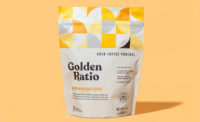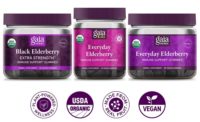Antioxidant Herbs and Inflammatory Bowel Disease
As a result, many patients try complementary medicine, especially herbs. While many herbals are said to be effective in chronic inflammatory conditions, there is little clinical and pharmacological data to support these claims.
Reactive oxygen metabolites (ROM) are present in excess in inflamed colonic mucosa (lining of the colon) and are likely to play a role in inflammatory bowel disease. Therapies that have antioxidant activity may potentially be clinically useful. This paper1 investigates the antioxidant effects in vitro of six herbs claimed to benefit inflammatory bowel disease and diseases such as rheumatoid arthritis.
The following herbs were evaluated: slippery elm (Ulmus rubra Muhl; Potter's Herbal Supplies Ltd, Wigan, U.K.), fenugreek (Trigonella foemum-graecum; Good'N Natural Manufacturing Corp. U.S. for Holland and Barrett, Nuneaton, U.K.), devil's claw (Harpagophytum procumbens; Bio-Health Ltd, Rochester, Kent, U.K.), Mexican yam (Dioscorea mexicana; Higher Nature, Burwash Common, East Sussex, U.K.), tormentil (The authors use the common name "tormentil;" however the Standard Common Name is cinquefoil. Potentilla erecta [L.] Raeusch; Bioforce UK Ltd, Irvine, Scotland, U.K.), wei tong ning (Chian Academy of Traditional Chinese Medicine, Beijing, China). Entire plant extracts were tested. Orange juice was tested as a nontherapeutic control. Aminosalicylate, a purified pharmacological agent, was tested as a positive control. Superoxide scavenging and peroxyl radical scavenging were examined in two different cell-free radical generating systems. Herbal effect on generation of oxygen radicals was examined in mucosal biopsies from patients with active ulcerative colitis.
In the superoxide assay, all herbs, except fenugreek, demonstrated dose-dependent antioxidant effects. In the peroxyl radical assay, all herbs had dose-dependent peroxyl-radical scavenging effects. In the inflamed biopsies, all herbs, except Mexican yam, had a significant antioxidant effect compared to control (P < 0.03 - 0.05). Orange juice had no effect in any assay.
The cell-free techniques have many technical advantages but do not closely model the in vivo situation. The tissue assay is sensitive but it nonspecifically detects production of multiple different ROMs. The different methods complement each other but do not mimic each other. All of the herbs tested are likely to contain numerous biologically active and antioxidant compounds, including flavonoids.
Slippery elm, devil's claw, tormentil, and wei tong ning were antioxidants in all three assay systems, similar to aminosalicylates. These herbs should be evaluated in vivo for their therapeutic potential in treating patients with inflammatory bowel disease.
- Heather S. Oliff, Ph.D.
Reference:
1 Langmead L, et. al. 2002. Antioxidant effects of herbal therapies used by patients with inflammatory bowel disease: an in vitro study. Alimentary Pharmacology & Therapeutics, 16:197-205Looking for a reprint of this article?
From high-res PDFs to custom plaques, order your copy today!




